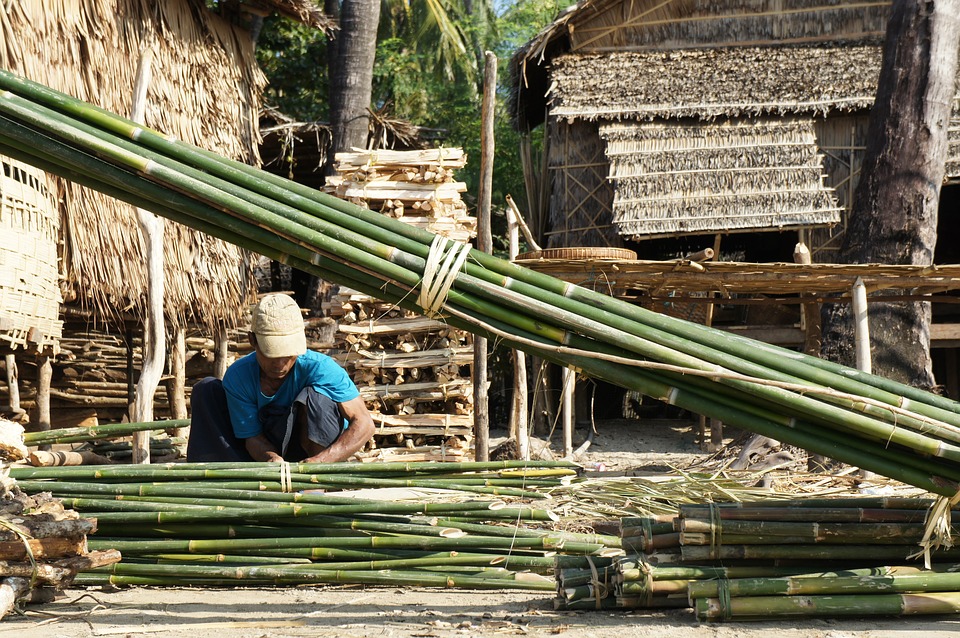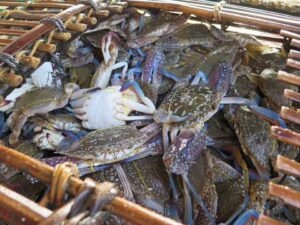Fisheries output near 1M tonnes
Fisheries production in Cambodia this year is expected to clock in at 936,300 tonnes, up 3.06 per cent from the 908,508 tonnes logged in for the entire year 2019, according to the Ministry of Agriculture, Forestry and Fishery’s Fisheries Administration.
Aquacultural output is on track to make up the lion’s share of production growth at 42.76 per cent or 400,400 tonnes fish, up 30.25 per cent from the 307,408 tonnes posted last year.
Freshwater fisheries yield is predicted to ring in the year at 413,200 tonnes, down 13.71 per cent from 2019’s 478,850, while marine fisheries output is expected to reach 122,700 tonnes, inching up 0.37 per cent from 122,250 tonnes last year.
While fisheries production will only ratchet up minimally this year over 2019, Minister Veng Sakhon stressed the important role of aquaculture fish in supplying the local market, pointing out its over-30-per-cent jump from last year.
He made the remark while on a field visit to Kandal province’s northernmost Ponhea Leu district on December 22 to inspect on-site production of prahok and pha’ak fermented fish pastes and smoked and dried fish at the top of the annual season.
“The figure clearly shows that the aquacultural sub-sector is crucial in supplying the local market as an alternative to natural fishing using ‘dai trei’ [small-meshed gill nets] and fishing lots.
“It is in accordance with the wishes of [Prime Minister Hun Sen] – to promote food production through household fish raising,” said Sakhon.
He attributed this year’s dip in freshwater fisheries yield to lower water levels in the Mekong River, flooding in the Tonle Sap Lake and climate change, noting that the Fisheries Administration had predicted the drop a year earlier.
Phorn Rany, owner of the 2ha “CAN” fish farm in Prey Veng province’s Mesang district, told The Post on December 23 that household-level fish raising has increased dramatically this year.
He noted that a spike in orders of guppies had forced him to expand his operation for the coming year.
He said the rising number of aquaculturists comes at the right time, as the government pulls out all the stops to encourage local fishing and ensure food security against the backdrop of Covid-19.
“Fish raising enjoyed a sharp surge this year, but the price for newly-hatched guppies has not increased.
“Given the situation, I think the number of aquaculturists will increase even more in the fast-approaching new year, which will contribute to upgrading people’s livelihoods and reducing reliance on imports,” Rany said.
He chalked up the new interest in aquaculture to the profitable method known as biofloc, which did away with the strenuous age-old practice of digging fish ponds.
With new-found ambition to ramp up his guppy production, Rany revealed plans to venture into fish-feed making in the near future.
While fish farms and guppy salesmen are abundant in the Kingdom, tonnes of daily guppy imports from Vietnam still flood the local market, he lamented.
Song Seyha, the owner of a fish farm in Tbong Khmum province’s Ponhea Kraek district, said that family-based fish raising is trending upwards and hence he plans to expand his operation next year.
He said he has sold 15-20 tonnes of newly-hatched guppies this year, a far cry from the five tonnes averaged in years past.
“Aquacultural output will increase even more onward because fish-raising techniques are not complicated,” Seyha said, adding that he will expand his nearly-1ha fish farm in the next couple of months in response to market demand.
Vann Chheng, another aquaculturist in the same district who often imports guppies from Vietnam, said Covid-19 propped up demand for the fish, improving his sales figures from 10 tonnes last year to 100 tonnes this year.
But he called on the government to broaden the market for the Kingdom’s aquaculturists, who complain that the state “pushes us to raise fish, but after the harvest, it’s difficult to find a market”. Phnom Penh Post







